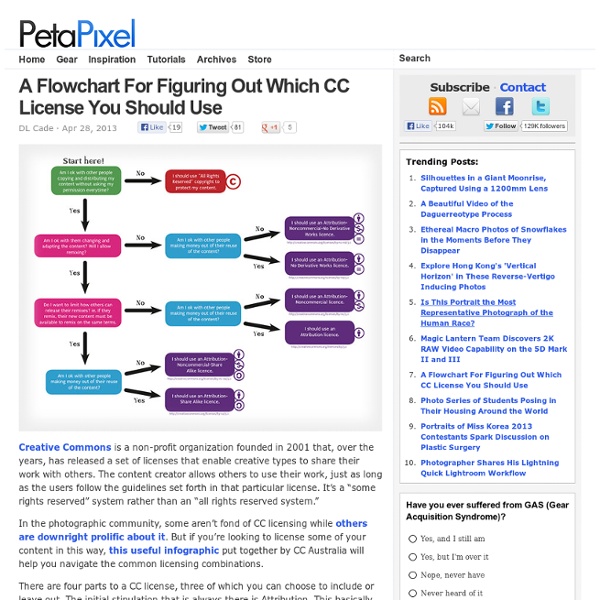Flowchart For Figuring Out Which CC License To Use
Creative Commons is a non-profit organization founded in 2001 that, over the years, has released a set of licenses that enable creative types to share their work with others. The content creator allows others to use their work, just as long as the users follow the guidelines set forth in that particular license. It’s a “some rights reserved” system rather than an “all rights reserved system.” In the photographic community, some aren’t fond of CC licensing while others are downright prolific about it. But if you’re looking to license some of your content in this way, this useful infographic put together by CC Australia will help you navigate the common licensing combinations. There are four parts to a CC license, three of which you can choose to include or leave out. Here’s the actual PDF to walk you through picking yours: Thanks for sending in the tip, Pete!
Hopper — Save links, text, images, and files in moments.
Related:
Related:



